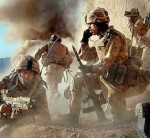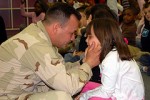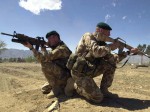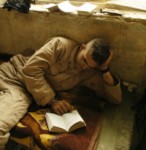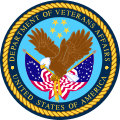A Mandatory Four Week Combat Decompression Experience. Eleven months of deployment, one month decompression.
It is useless to try to reason a man out of what he was never taught.
Jonathan Swift
Never in the history of this nation, has there been a project more critical and paramount to the health and well being of our Warriors. This facility will not only address the issues and traumatic impact of the battlefield, it will also enhance the reintegration of our Troops into society as well. We are out of time! Something of this magnitude and effort must be established now.
The following is a suggested guideline based on input from VA Combat Counselors, active Military personnel and Civilian Clinicians working with our returning Veterans of war.
This study is broken into three main categories; the Psychological, Physical and Spiritual. It is critical for the reintegration of our troops into society that we take a direct and proactive approach in dealing with the impact of battle. Whether at Guantanamo or other such facilities this program will assist in breaking the stigma of Combat Trauma (PTSD) as an abnormal effect of battlefield exposure. It will also give the Troops the “tools” they need to survive in civilian society.
The program is set at four weeks which is part of the twelve month deployment. It cannot be added onto the deployment. That will not work. Please Note: Many psychiatrists and psychologists have stated that if a program like this were in place, more than 70% of our Troops would not suffer severe PTSD when returning to civilian society. This would greatly relieve the VA from hundreds of thousands of new claims.
First Step: Bring them home on Civilian Cruise Ships
It has been suggested by many individuals that it would be extremely useful to bring the Troops home on Civilian Cruise Ships. If necessary, the time aboard the ship could be subtracted from the time at Guantanamo. But the topics spanning the program can be covered between the two; ship and land base…not to exceed 30 days. The present cost of flying troops or bringing them home on the fleet far exceeds the cost of this approach.
Psychological/Clinical Aspects:
- By enforcing the mindset of self-respect/self-worth as a Warrior having survived battle, the program will clearly give recognition of achievements and acknowledge their success of having survived war. Troops will be praised for what they did and not made to feel ashamed of it.
- Detailed education and clarification will be presented to the Troops, explaining their responsibilities of being within the Combat Unit Family, i.e. the Warrior Trust Bond is explained in detail. This is critical to the Warrior mentality, their self esteem and security within their unit.
- Troops will be given an in depth explanation on the Impact of Killing in battle. The effects of killing the enemy, killing men, women and children. It is extremely important to explain how the act of killing affects the psyche on the instinctual level and causes a moral dissonance in thoughts and beliefs. By understanding this concept alone, the clinician is able to move into regions of self-awareness and self-forgiveness.
- Further development is required in the explanation of how killing brings into play multiple emotions of rage/anger, revenge, cruelty, hate, power over another and the satisfaction itself of taking life. Then comes the remorse, guilt self-judgment , low self-esteem and thoughts of self-destruction. Again, by understanding the WHYS helps the Troops deal with the How’s of healing.
- Addressing the Normalcy of emotions and feelings once having experienced war. No one walks off the battlefield unchanged, but it is normal to feel the repercussions of battle which manifest in disturbing effects, shaping the life of the Warrior. Troops will be conditioned to accept their reactions to war as normal. They will be encouraged to admit their own humanity rather than deny it.
- The Troops will be given an education in the Stages of Grieving. Defining the repercussions of loss on the battlefield, and how this is a normal process to cope with watching your true friends being killed in battle.
- Repetitive explanation that Combat Fatigue is the result of war, it is Normal to feel tired and burned out from participating in too much combat. It is normal to need to address these issues through trained Combat Trauma Counselors.
- Defining Why guilt arises and then detailing a clear, concise explanation of the levels of guilt. This guilt manifests in feelings of personal responsibility (survivor guilt) and it’s resulting negative, self-destructive behavioral expressions.
- A thorough explanation of Combat Adrenaline; how the body produces it, how the body uses it and how it becomes addictive. Alternative solutions will be proposed to replace the need for this opiate.
- Substance abuse will be discussed to explain “Why” there is a normal tendency to self-medicate in an attempt to relieve the pain of memories, nightmares and guilt, loss and other emotions left from the battlefield.
- It is extremely important to present a detailed explanation of the Primal Self, the Beast necessary for surviving war. It will be necessary to bring in a small degree of physiology, and discussions of the brain (Amygdala and Hypothalamus) where the reactions of “Fight, Flight and Freeze” originate. By understanding where the emotions come from and how to identify between the Primal and the Civilized Self, a valuable tool will have been put in place for our Troops.
- An explanation of the “Two Worlds, Dimensions, Realities” of the Warrior mind is necessary for balancing reactions to stress in civilian society. This will lead into an understanding of depression and other Normal Reactions to battle. Again, tools will be in place, teaching our Warriors How to deal with these emotions in a constructive way.
- Adapting their military skill set into civilian society is again extremely important. By using their strengths as a Warrior Troops can look at civilian life as a New Mission, no different than the military. Thus allowing Troops the time to transition into society. Troops will be taught to face problems and hardships in society in the same manner as on the battlefield. This they understand and can take pride in.
- There are many modalities now being practiced, but for the sake of this outline, the use of such approaches as Exposure Therapy (revisiting past experiences), Reality Based Cognitive Reconstruction (forming new, constructive habits and reactions to express one’s self) are among the possibilities. A complete understanding of the Primal Self is critical to the healing process.
Physical Aspects:
The physical setting of Guantanamo is beautiful, with swimming pools, tennis courts, theaters and access to warm beaches and the ocean.
- To facilitate and enhance adaptation/reintegration strategies, all Troops will dress in civilian clothing, to be issued upon arrival at the base.
- All weapons will be checked in and secured. Platoons will be broken into squad size units to promote more intimate discussions, after presentations of the topics listed above.
- Sports activities will be organized after the morning briefings. Weight machines, exercise machines, ping pong, baseball, tennis courts, swimming pools, surf boards, belly boards, skin diving equipment, etc. will be available for Troop participation.
- Lunch Cook outs, Bar-B-Qs for the Troops to remind them of the States.
- Limited alcohol, to prevent Troops from going on the usual “binge” when they return home.
- If possible, contact with Horses (as in the Horses for Heroes Program) and dogs are essential for some Troops to re-establish a “compassion for life” part of their psyche. This is also a Trust Builder. Trust an animal first, then a human, as has been used in clinics with great success.
Spiritual Aspect:
- Through higher mind discussions, inspirational movies and music, to acknowledge the “Nobility of the Human Spirit” (followed by discussions). Being inspired by great human examples can inspire the Troops and encourage “goal setting”, giving them a vision for the future.
- It is important to develop the understanding of Mentors and/or Coaches in life. Goal setting and positive attitude workshops work very well when followed up with mentor relationships. This can be implemented in the briefing schedule.
- Native American Fire Circles work very well to bring out a sense of belonging and trust. This can be one of the evening activities.
Families may be included in the program:
If possible, families of some to the troops may spend the last week or several days with their Warrior. This would give families an opportunity to meet with clinicians and discuss the changes in the Warrior from when he or she left and who they have become after war. It has been suggested that this alone would significantly reduce family abuse and separations.
Warriors Leaving the Military:
For those Warriors leaving the military, the facility is a unique position to act on their behalf. Once completing the course of debriefing, and prior to returning to the states, each Warrior can be linked up with the Vet Center nearest their home town. This accomplishes several objectives.
- They will have filled out the paper work for the Veterans Administration so that they are on record as having completed the debriefing course.
- They will know that they have a support base waiting for them.
- They will expect to have a 30, 60, 90 day follow up to check on their readjustment to society.
- There will have been a Trust Bond established with the counselors at the facility and expectation of a trust level and safety net with the anticipated Vet Center.
- They will understand that once they arrive home, they will have access to a Warrior Mentor to assist them with problems they confront in readjustment issues. This mentor may be through the Military Order of the Purple Heart or other such organizations participating in the Warrior Mentor Program now being formulated.
Submitted by Sgt. Brandi,
Combat Trauma Consultant
United States Marine Corps
Copyright Sgt. Brandi, USMC 3/3/2008






